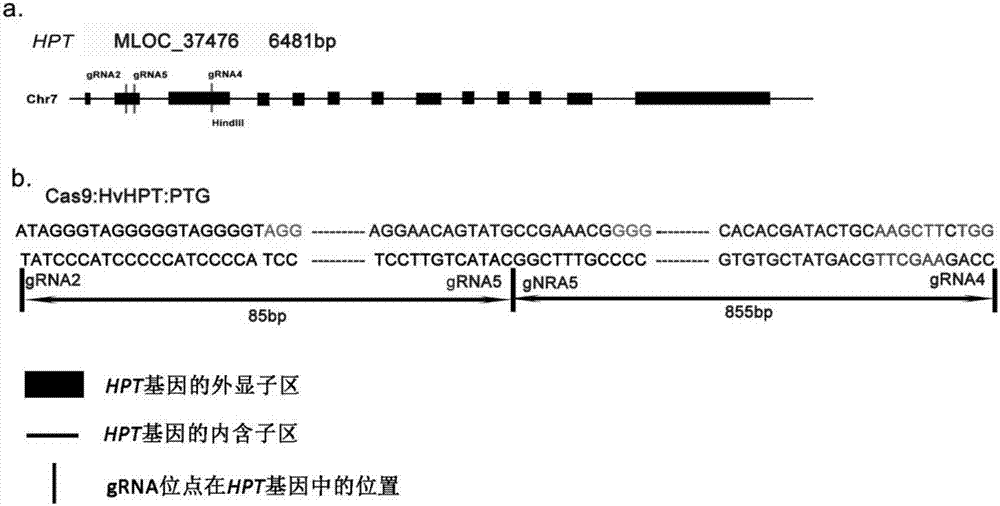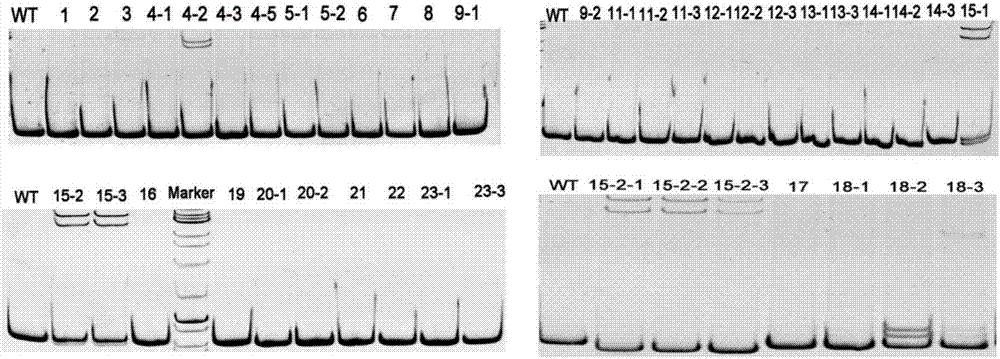Method for applying CRISPR-Cas9 system to knockout of key gene HPT in VE synthesis pathway of barley
A systematic knockout and barley technology, applied in the field of barley transgenic material construction, can solve the problems of low efficiency of barley gene transformation and long acquisition cycle of stable transgenic materials
- Summary
- Abstract
- Description
- Claims
- Application Information
AI Technical Summary
Problems solved by technology
Method used
Image
Examples
Embodiment 1
[0054] Example 1 Obtainment and identification of the key rate-limiting enzyme gene knockout strain HPT in the barley VE synthesis pathway.
[0055] The barley variety used in the present invention is Hordeum vulgare L., cv. Golden promise, and the applicant promises that the barley variety will be released to the public within 20 years from the date of application for this patent, so as to realize and utilize the technical solution described in the present invention.
[0056] 1. Selection of gRNA target sites
[0057] Since the HPT gene is located on chromosome 7 of the barley genome, according to the target site design principle of CRISPR-Cas9 technology, the present invention designs the gRNA target site in the exon region and will be designed at the 5' end of the HPT gene (because the gene It encodes a protein, and the 5' end encodes just the functional region of the protein). Such as figure 1 shown.
[0058] 2. Cloning of gRNA fragments and vector construction
[0059...
PUM
 Login to View More
Login to View More Abstract
Description
Claims
Application Information
 Login to View More
Login to View More - R&D
- Intellectual Property
- Life Sciences
- Materials
- Tech Scout
- Unparalleled Data Quality
- Higher Quality Content
- 60% Fewer Hallucinations
Browse by: Latest US Patents, China's latest patents, Technical Efficacy Thesaurus, Application Domain, Technology Topic, Popular Technical Reports.
© 2025 PatSnap. All rights reserved.Legal|Privacy policy|Modern Slavery Act Transparency Statement|Sitemap|About US| Contact US: help@patsnap.com



